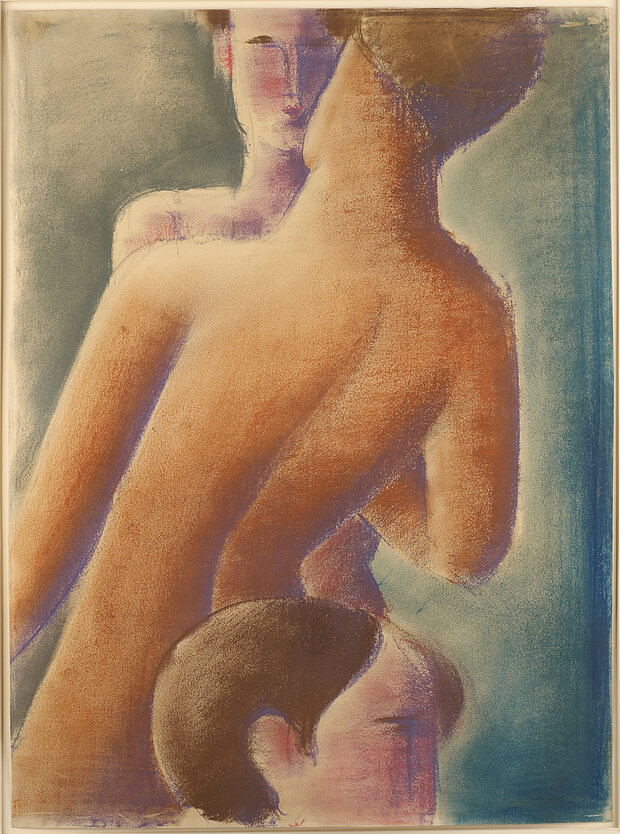
Schlemmer, Oskar
Dreiergruppe mit Rückenakt
Group of Three with One Nude Seen From the Back
1929

© mumok
| Object description | Pastel on paper |
|---|---|
| Object category | painting |
| Material |
Object:
pastel
Support:
paper
|
| Technique |
Object:
pastels
|
| Dimensions |
object size:
height: 60 cm,
width: 44 cm
frame dimension:
height: 93,8 cm,
width: 74 cm,
depth: 4,2 cm
|
| Year of acquisition | 1980 |
| Inventory number | G 240/0 |
| Creditline | mumok - Museum moderner Kunst Stiftung Ludwig Wien |
| Rights reference | Gemeinfrei | public domain |
| Further information about the person | Schlemmer, Oskar [GND] |
| Literature | Laboratorium Moderne/Bildende Kunst, Fotografie und Film im Aufbruch |
The pastel drawing ‘Dreiergruppe mit Rückenakt’ [Group of Three, One Nude Seen from the Back] was painted by Oskar Schlemmer around 1929. The pictorial space is not structured by architectural fragments. Schlemmer rejected both drawn perspective lines and elements that simulate spatial depth. It is only the staggered arrangement of human bodies that creates the impression of spatial succession. Both as subjects and formally, the figures are ordered into a group around a central axis. They are geometrically simplified and the effect is as if they had been built. The parts of their bodies are locked into a system of verticals and diagonals. They appear to orient their gaze and direction of movement around the middle axis – in the depths of the picture, in profile to the side, and directly towards us in front of the picture – and thus to enter into a relationship with each other. The nude with his back to us is the centre of the composition. The work is one of a series Schlemmer made around 1930 of similar multi-figure compositions while teaching at the Bauhaus in Weimar and Dessau. Schlemmer’s central question as an artist concerns the human figure in, and its relationship to the laws of, space. This is also the subject of “Dreiergruppe mit Rückenakt”. He did not make portraits of individuals but, rather, reduced the human figure to a stereometric form with a doll-like general validity. In doing so he excluded all accidents of personality and sought to express the issue neutrally. Schlemmer himself called these types he developed ‘Differenzier-Menschen’ [differentiated human.] The geometrically constructed human body is also a central theme of the ‘stage figures’ he developed for the so-called ‘Triadic Ballet’ that had already been premiered in 1922.
© mumok – museum moderner kunst stiftung ludwig wien